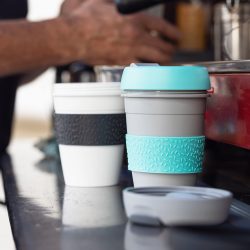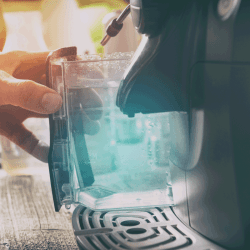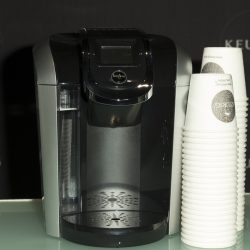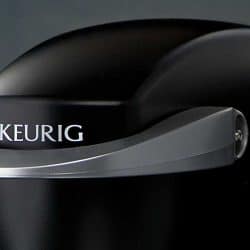Everybody has probably used a Keurig machine by now. Whether it's at home, work, or even in hotels, these convenient appliances are everywhere! Easy-to-use single-use coffee machines have grown in popularity over the past decade and show no signs of slowing down. However, does that simplicity and convenience come at a price? Considering that they involve water, it makes sense that one of those prices might be mold. We have researched the ins and outs of Keurigs to help you deal with this possible issue in your machine!
Keurig coffee makers do have the ability to grow mold. Since water sits in the plastic reservoir, it is, unfortunately, a good breeding ground for mold. It's essential to be able to tell when mold is starting to gather in your Keurig. You can prevent mold through routine cleaning and maintenance.
Any tool, appliance, or machine that has any direct involvement with food is very serious about preventing mold. Before you take out your magnifying glass and start inspecting your Keurig for mold, there may be more that you'll want to know. Make sure to keep reading below to learn in detail about dealing with mold and your coffee maker!
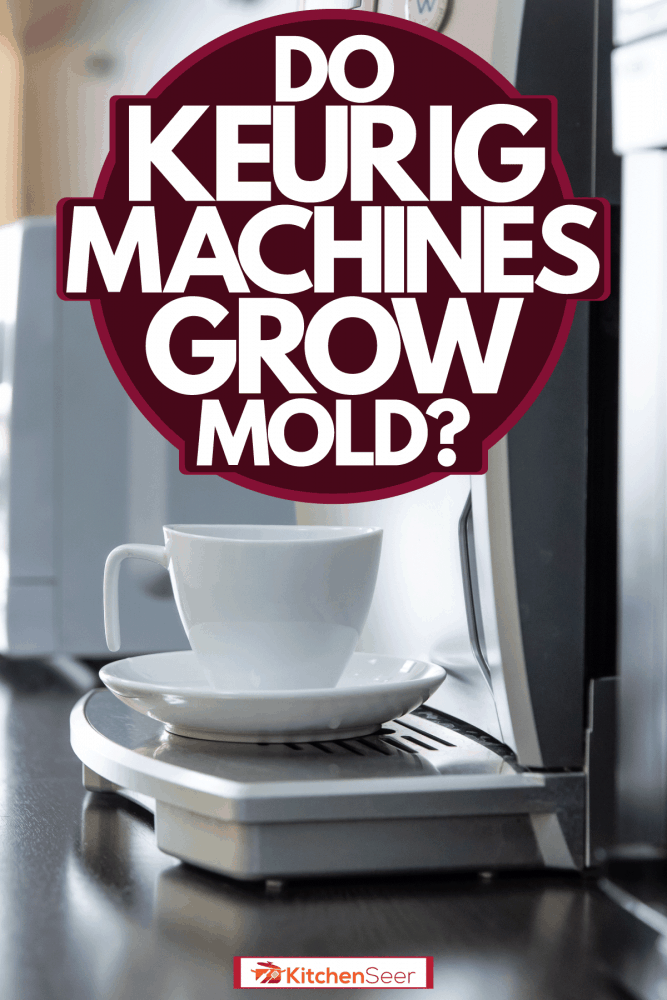
How To Handle Mold With Your Keurig Machine
Mold is something to take very seriously in any environment. This is especially true in places where eating and drinking happens. If your Keurig machine has mold in it and you don't know, then you could be drinking coffee that has been contaminated.
Why Can Mold Grow In Your Keurig Machine?
Anything that deals with water has the potential to grow mold. This is especially true with a Keurig appliance since water sits in its reservoir. The convenience of these machines is that they are always ready to go, with water in them, to make your coffee.
It's very easy for convenience to make you forget that you have to empty that water and clean the container once in a while. Another mold-making factor is where that appliance sits in your kitchen. If it's in a dark corner or pantry, then that makes it grow mold even faster!
How Do You Know If Your Keurig Has Mold?
There are a couple of ways to tell if your Keurig has a mold problem. These range from obvious to more subtle signs. The first major sign is simply seeing mold in or around your Keurig machine. Keurig water reservoirs are the most obvious place to find mold, but it's not the only one.
A couple of other places that you should check regularly are the k-cup holder and the drip tray. These are a little more hidden and can easily accumulate moisture and grime that will eventually breed mold if not cleaned.
The other signs of mold are more invisible but also more dangerous. Ingesting mold through your Keurig machine can lead to allergic reactions and cold-like symptoms. This article on the ingestion of mold from the USDA goes into more detail on the dangers of unknowingly consuming products that have been contaminated with mold.
There are tens of thousands of different types of mold, and you could very easily have adverse reactions to the ones that might grow in your Keurig machine.
How To Keep A Keurig From Getting Moldy?
The best way to prevent mold from growing in your Keurig is some simple maintenance. It's very easy to forget the last time your Keurig machines reservoir was emptied, let alone cleaned. To prevent mold from forming in the reservoir, you should empty and dry it regularly.
For even further prevention, the reservoir should be removed from the Keurig and washed by hand with soap and warm water. Then make sure to dry it thoroughly before filling it with fresh water and reinstalling it onto your Keurig.
Aside from the reservoir, it is also necessary to check and clean some other parts of your Keurig appliance. The k-cup holder and the drip tray should also be cleaned regularly to prevent any possible mold growth. You can remove the drip tray and wash it just like the reservoir.
You can even place it in the dishwasher if you would like. The k-cup holder cannot be removed. However, it should still be wiped with warm soapy water and dried with a clean cloth.
How Do You Clean Mold Out Of A Keurig?
Aside from routinely cleaning the reservoir and other outer parts of the machine, there are a couple of ways to clean the inside of the Keurig as well. Every three to six months, you should descale your coffee maker. The main purpose of this is to break up any mineral build-up that happens inside the machine. However, it also helps to prevent any mold or mildew from building up inside of the appliance.
To perform this cleaning to your Keurig, you can use two different methods. You can use vinegar as an at-home remedy, or you can purchase a descaling solution. For the vinegar method, you start by filling the Keurigs reservoir with equal parts vinegar and water. Then you run the machine and act as if you are making cups of coffee, except you don't put a k-cup in its designated spot.
Cleaning your Keurig machine using an actual descaling solution is a very similar process. Depending on the descaler that you buy, it may have different directions for exactly how much you should dilute it with water. You place the solution into the Keurig reservoir and dilute it per its instruction and run it through the machine.
You will want to run the liquid entirely through the machine with both methods and then even flush the machine with plain water by filling the reservoir and running it through.
Here is a great video reference showing how this process is done!
Click here to shop for descaler on Amazon.
Do Keurigs Get Moldy Inside?
Keurig machines can grow mold and mildew on the inside of them as well as the outer components. However, unless the water is sitting in them for long periods without use, then it is unlikely that there is mold in your Keurig. That doesn't mean there aren't some forms of possibly harmful bacteria and other things building up in them.
The best way to prevent this is to clean it regularly like anything else. Use the methods above every few months to properly clean the inside of your Keurig machine to help prevent mold and bacteria growth.
Does This Only Happen To Keurig Machines?
If you're starting to think that you should toss your Keurig, remember, this problem isn't exclusive to just this coffee maker. All coffee makers are suspectable to mold growth. Like with Keurigs, they are constantly wet and made of plastic that often sits in dark areas.
Other coffee makers may even have more places to grow mold, like on used filters or in the pot that coffee is brewed into. So, if you love your Keurig, then you shouldn't give up on it just because it has some of the same problems as every other coffee maker.
Final Thoughts
Unfortunately, Keurig machines, and all coffee makers, have the potential to grow mold. They are the perfect breeding ground for it due to all of the moisture. However, that doesn't mean that you should give up coffee. The solution to this problem is relatively easy, clean it regularly.
Wash the external reservoir with warm soapy water regularly and the rest of the outside of the machine. To clean the inside of the Keurig, you can use vinegar or a descaler. This way, you can have your delicious morning coffee without all of the worries!
To get the most out of your Keurig coffee machine, make sure to click on the links below:
How Long Can You Leave Water In A Keurig Reservoir?
Keurig Tastes Watered Down – What To Do?




